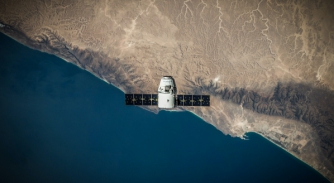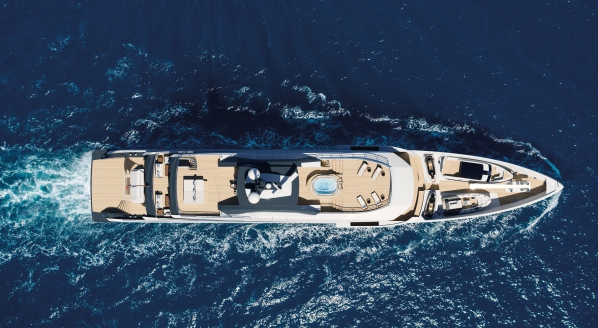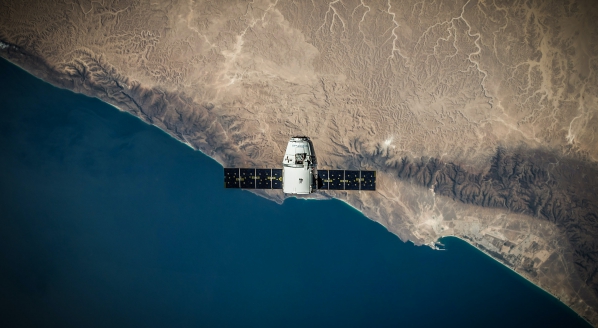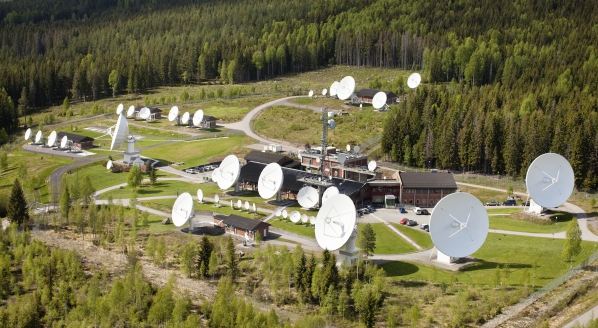Inmarsat announces Orchestra communications network
Ronald Spithout, President of Inmarsat Maritime, joins SuperyachtNews to discuss integration and augmentation…
In the largest ever transformation of its current services, Inmarsat Orchestra will bring together existing geosynchronous (GEO) satellites with low Earth orbit satellites (LEO) and terrestrial 5G into an integrated, high-performance solution. SuperyachtNews speaks with Ronald Spithout, President of Inmarsat Maritime, about how Inmarsat aims to implement the system and stay ahead of the increasing connectivity demands from superyachts and their users.
‘Satcomms’ is a cliché abbreviation that belies a complex web of interconnected systems, of which satellites are just one part. Orchestra will combine the existing geostationary network of GX and L-band satellites (GEO) with terrestrial networks/5G. A key innovation from Inmarsat is the development and launch of a mobility market-specific low Earth orbit (LEO) constellation to augment the system and, theoretically, provide high-speed connectivity with low latency worldwide.
This system is what Inmarsat refers to as a ‘dynamic mesh network’. The demand for connectivity is growing in step with the complexity of onboard systems, and the expectations of users. As Spithout highlights “Regardless of whether you're on a merchant vessel, a superyacht or a passenger vessel, digitalisation is happening everywhere. We see far higher connectivity demand and application of technology onboard than even one year ago.”
The terrestrial 5G rollout has elevated expectations as to what is possible from a network provider. Bringing that service to superyachts, and not only those in direct range of existing networks is a crucial part of Orchestra. “We will expand on a meshed, high performance, high throughput, low latency, 5G augmentation service over our existing network. We are putting a 5G terrestrial augmentation in whereby the vessels are their own relays. So how cool is that?” explains Spithout.
LEO constellations are no longer concepts for a future age. Many of us have been lucky enough to see the ‘string of pearls' across the sky as another dozen or so are released after a launch. The preeminent LEO constellations will be an integral part of many people lives soon. Still, Spithout explains that a ubiquitous web of LEO satellites is too simplistic a way to view the future for the marine sector. “We are augmenting the 5G network and existing satellites with an LEO network that we are designing. We are not aiming for a large consumer market like many of the more generic constellations. We are using it in a very targeted way to continue to serve the global mobility market that we serve today.”
While some proposed LEO constellations appear to grow in size each lunar cycle (SpaceX’s Starlink is hoping to launch over 40,000, for example) Inmarsat foresees a more calculated and specialised number for Orchestra, as Spithout elaborates “Our LEO network does not need thousands of satellites. We calculate currently that one hundred and fifty to hundred and seventy-five will be enough to augment our hotspots worldwide, even when superyachts are offshore.” Spithout summarises LEO’s place in Inmarsat’s future.
“Orchestra does not need LEO for global connectivity. We already have that. We need LEO to augment the areas that will be extremely busy, enabling us to extend the hotspots globally while providing low latency and extremely high throughput in the corridors at sea and offshore.”
Orchestra presents a significant level of investment in an increasingly connected world. However, Spithout sees that the specific demands of the superyacht sector dictate the need for such large-scale systems. “A lot of maritime customers are suffering from inadequate network coverage that is not designed for purpose. We are designing our network for business mobility customers; whose requirements are very demanding.”
When we spoke about the multi-faceted way that Covid has put pressure on operations, Spithout elaborates that it may have elevated the expectations of connectivity, and subsequently the potential market for Orchestra. “During the pandemic, we saw an increased demand for connectivity. Many maritime industry stakeholders discovered that they had to adapt their ways of working because they couldn't effectively interact with specific vessels due to restrictions. Connectivity was the secret to running their operation and supporting the mental health of their crew.”
The initial five-year (2021-2026) total investment for ORCHESTRA is expected to be in the order of $100m. And, as the world appears to be moving inexorably into a digital age, Spithout concludes that “It proved our point that digitalisation was imminent, and now it's a matter of staying ahead of the curve, not only for next year or two, when we finish 5G mesh augmentation. What is important is being prepared for the next 10 years and beyond, and having a network that is designed effectively for the future demands of the maritime sector.”
Profile links
NEW: Sign up for SuperyachtNewsweek!
Get the latest weekly news, in-depth reports, intelligence, and strategic insights, delivered directly from The Superyacht Group's editors and market analysts.
Stay at the forefront of the superyacht industry with SuperyachtNewsweek
Click here to become part of The Superyacht Group community, and join us in our mission to make this industry accessible to all, and prosperous for the long-term. We are offering access to the superyacht industry’s most comprehensive and longstanding archive of business-critical information, as well as a comprehensive, real-time superyacht fleet database, for just £10 per month, because we are One Industry with One Mission. Sign up here.
Related news

Connectivity considerations in the Pacific
Carlos Carbajal, CEO of OmniAccess, discusses the key challenges some superyachts may overlook
Technology

Alewijnse to work on two more AMELS 60 superyachts
They will carry out the complete electrical, Nav-Com and AV-IT systems installation
Technology

Warning signals
SuperyachtNews investigates the current status of an under-siege satcomms sector
Technology

Demand for satellite communications continues apace
Telenor Satellite observes that superyachts are showing positive signs of preparing for the summer as normal
Technology

IMO deadline for a stricter approach to cyber security fast approaches
Insights from DNV GL on this rapidly evolving topic
Technology
NEW: Sign up for
SuperyachtNewsweek!
Get the latest weekly news, in-depth reports, intelligence, and strategic insights, delivered directly from The Superyacht Group's editors and market analysts.
Stay at the forefront of the superyacht industry with SuperyachtNewsweek




